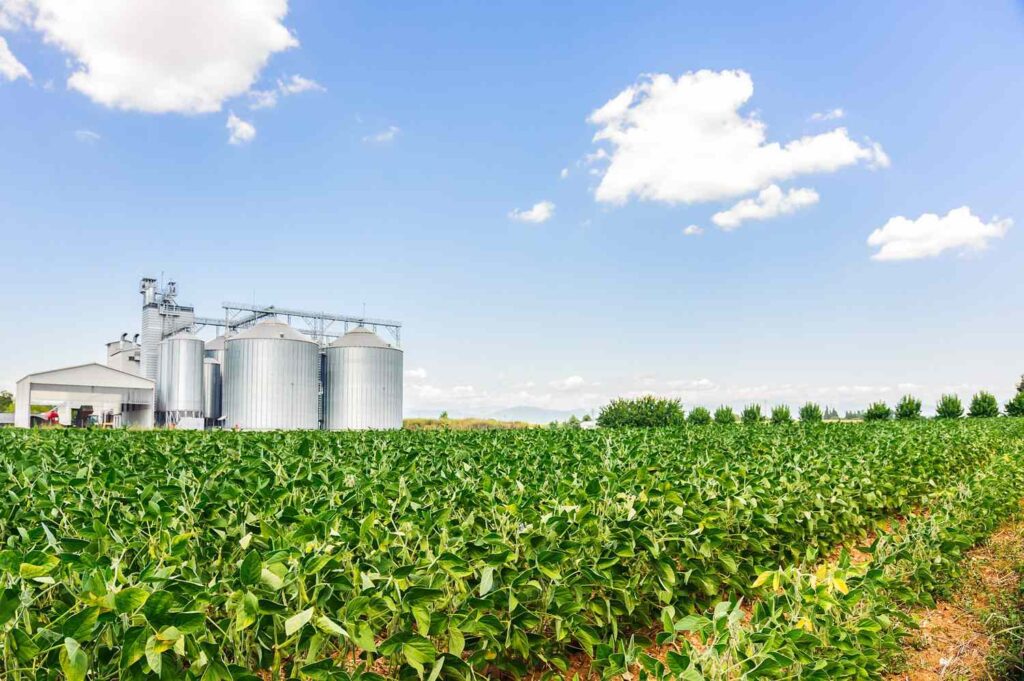
Factors that affect Alabama farmland appraisals include soil quality, location, land size, water rights, infrastructure, market trends, environmental regulations, and government policies. Understanding these factors is essential for evaluating the value of farmland in Alabama.
Key Takeaways
- Soil quality, location, land size, water rights, and infrastructure significantly influence Alabama farmland appraisals.
- Proximity to markets, transportation access, and water sources are crucial factors in determining farmland values.
- Larger land sizes offer economies of scale and diversification opportunities, leading to higher appraised values.
- Water rights, including surface and groundwater rights, play a vital role in determining farmland appraisal values.
- Well-maintained infrastructure enhances land usability and overall value in Alabama farmland appraisals.
Soil Quality
The assessment of farmland values in Alabama is greatly influenced by the soil quality present on the properties. Soil quality plays a pivotal role in determining the productivity and potential uses of agricultural lands. The diverse soil types found across Alabama, ranging from rich alluvial soils to sandy loams, directly impact the value of farmland.
In Alabama, the soil quality is typically evaluated based on factors such as fertility, drainage, texture, and depth. Soils with high fertility levels, good drainage, suitable texture for root growth, and sufficient depth for crop development are highly sought after and command higher appraised values. Conversely, lands with poor soil quality, such as those prone to flooding, erosion, or with limited fertility, may be valued lower due to their reduced agricultural potential.
Appraisers often consider soil quality assessments alongside other factors like location, land use regulations, and market trends to arrive at a thorough valuation of farmland in Alabama. Understanding the intricacies of soil quality is essential for accurate farmland appraisals in the state.
Location
Strategically situated farmland holds significant sway over Alabama's agricultural property appraisals. The location of a farm can greatly impact its overall appraisal value. Here are four key factors related to location that influence Alabama farmland appraisals:
- Proximity to Markets: Farms located close to major cities or distribution centers often command higher appraisals due to easier access to markets for selling produce or livestock.
- Access to Transportation: Farmland located near highways, railways, or waterways tends to have higher appraisals as transportation accessibility is important for moving goods to market efficiently.
- Climate and Growing Season: The location's climate and length of the growing season play an essential role in determining the types of crops that can be grown, impacting the farm's productivity and, consequently, its appraisal value.
- Availability of Water Sources: Access to reliable water sources, such as rivers, lakes, or aquifers, is essential for agricultural activities. Farmland with ample water resources typically garners higher appraisals due to increased irrigation possibilities and overall productivity.
Land Size
When evaluating Alabama farmland appraisals, the size of the land holds significant importance in determining its overall valuation. The acreage of a piece of farmland directly influences its market value, with larger plots typically commanding higher prices due to their potential for increased agricultural productivity or development opportunities. Larger land sizes often offer economies of scale, allowing for more efficient farming practices and potentially higher yields, which can positively impact the property's appraisal value.
Furthermore, the size of the land also plays an essential role in evaluating its potential utility and versatility. Larger parcels of farmland may have the flexibility to support a wider range of crops or livestock, diversifying income streams and enhancing the property's overall worth. Additionally, larger land sizes may provide more opportunities for future expansion or subdivision, further impacting the appraised value of the farmland.
Essentially, the size of the land is a fundamental factor in Alabama farmland appraisals, with larger acreages generally correlating with higher valuations due to the various advantages and possibilities they offer regarding agricultural potential and future land use.
Water Rights
Given the important role that water plays in agricultural operations, the allocation and ownership of water rights greatly impact the appraisal of farmland in Alabama. Water rights are a significant factor that appraisers consider when evaluating farmland due to their direct influence on the land's productivity and overall value. Here are four key points to understand how water rights affect farmland appraisals in Alabama:
- Surface Water Rights: Ownership and access to surface water bodies such as rivers, streams, and lakes can greatly enhance the value of farmland as they provide irrigation opportunities and support livestock operations.
- Groundwater Rights: The rights to use groundwater for agricultural purposes are crucial, especially in regions where surface water may be limited. Secure groundwater rights can increase the productivity and profitability of farmland.
- Water Use Regulations: Compliance with state and local water use regulations is important for farmland appraisals. Adhering to these regulations ensures the sustainable use of water resources, which can impact the land's appraisal value.
- Historical Water Rights: Understanding the historical water rights associated with a property is important. Property owners with long-standing water rights may have a competitive advantage, leading to higher farmland appraisals.
Infrastructure
Water rights allocation and ownership greatly influence the appraisal of Alabama farmland, and another vital aspect affecting the valuation is the presence and quality of infrastructure on the land. The infrastructure on a piece of farmland includes elements such as roads, bridges, drainage systems, irrigation systems, fencing, and any other man-made structures that contribute to the overall functionality of the property. The quality and condition of these infrastructural components play a significant role in determining the value of the land. Well-maintained infrastructure not only enhances the usability of the farmland but also increases its market value.
Investments in infrastructure can improve accessibility, water management, and overall productivity of the land, making it more attractive to potential buyers or tenants. Conversely, neglected or poorly constructed infrastructure can hinder agricultural operations, limit the land's potential uses, and decrease its value. When appraising farmland, evaluators consider the state of the infrastructure and its impact on the property's overall worth.
Market Trends
Amid the dynamic landscape of Alabama farmland appraisals, analyzing current market trends is crucial for understanding the evolving valuation factors. Keeping a close eye on market trends can provide valuable insights into the forces shaping the value of farmland in the state. Here are four key market trends influencing Alabama farmland appraisals:
- Commodity Prices: Fluctuations in commodity prices directly impact the profitability of farming operations, thereby affecting the overall value of farmland.
- Interest Rates: Changes in interest rates can influence the cost of borrowing for farmers looking to expand their operations or invest in more land, impacting farmland values.
- Land Use Trends: Shifts in land use patterns, such as increasing demand for organic produce or alternative energy crops, can drive changes in farmland values.
- Investor Demand: The level of interest from investors, both local and foreign, in acquiring farmland for agricultural purposes or development can have a significant impact on market dynamics and appraisals.
Environmental Regulations
Effective management of environmental regulations plays a pivotal role in shaping the sustainable practices and compliance standards within Alabama's farmland appraisal industry. These regulations are put in place to safeguard the environment, promote the responsible use of resources, and protect the health of individuals working on or near farmland. Adhering to these regulations is essential for maintaining the value of farmland and mitigating potential risks associated with environmental liabilities.
Below is a table detailing some key environmental regulations that impact Alabama's farmland appraisal industry:
| Regulation Name | Description | Impact on Farmland Appraisals |
|---|---|---|
| Clean Water Act | Regulates discharges of pollutants into waters | Assesses water quality |
| Endangered Species Act | Protects endangered species and habitats | Considers habitat conservation |
| Wetlands Regulations | Protects wetlands from development | Determines land use restrictions |
| Pesticide Regulations | Controls pesticide use and application | Considers soil and water quality |
Government Policies
Influencing the operational framework of Alabama's farmland appraisal sector, government policies serve as critical determinants shaping industry practices and regulatory compliance. Government policies play an important role in shaping the landscape of farmland appraisals in Alabama. Here are four key ways in which government policies impact the sector:
- Tax Incentives: Government policies regarding tax incentives for agricultural land use can greatly affect the perceived value of farmland in Alabama.
- Subsidies and Support Programs: Subsidies and support programs provided by the government can influence the profitability of farming operations, which in turn impacts farmland appraisals.
- Zoning Regulations: Government regulations on land use and zoning can restrict or enable certain types of agricultural activities on farmland, affecting its appraisal value.
- Environmental Conservation Policies: Policies aimed at promoting environmental conservation on farmland can impact appraisal values by considering factors such as soil health and sustainability practices.
Frequently Asked Questions
How Do Property Taxes Impact Alabama Farmland Appraisals?
Property taxes play a significant role in Alabama farmland appraisals. They can affect the overall value of the land by influencing the operating costs for the farmer and impacting the potential profitability of the agricultural investment.
Are There Any Historical Factors That Can Influence the Value of Farmland in Alabama?
Historical factors, such as land use changes, agricultural trends, infrastructure development, and economic shifts, can greatly influence the value of farmland in Alabama. Understanding these historical contexts is essential for accurate property appraisal assessments.
What Role Do Neighboring Properties Play in Determining the Appraisal Value of Alabama Farmland?
Neighboring properties can have a substantial impact on the appraisal value of Alabama farmland. Factors such as land use, property size, and development potential of adjacent lands are key considerations in determining the overall value of farmland in the state.
How Does the Presence of Wildlife or Conservation Areas Affect the Appraisal of Alabama Farmland?
The presence of wildlife or conservation areas can greatly impact the appraisal of Alabama farmland by enhancing its ecological value, promoting biodiversity, and potentially restricting certain land use activities, all of which may influence property valuation.
Can the Presence of Mineral Rights Impact the Value of Farmland in Alabama?
Mineral rights can greatly impact the value of farmland in Alabama. The presence of valuable mineral deposits, such as oil or natural gas, can lead to higher appraisals. Conversely, restrictions on mineral extraction may lower property values.
Conclusion
To sum up, various factors play a significant role in impacting Alabama farmland appraisals. These include soil quality, location, land size, water rights, infrastructure, market trends, environmental regulations, and government policies. It is important for farmers and landowners to take into account these factors when assessing the value of their farmland. By understanding and evaluating these factors, individuals can make informed decisions about their agricultural investments in Alabama.
